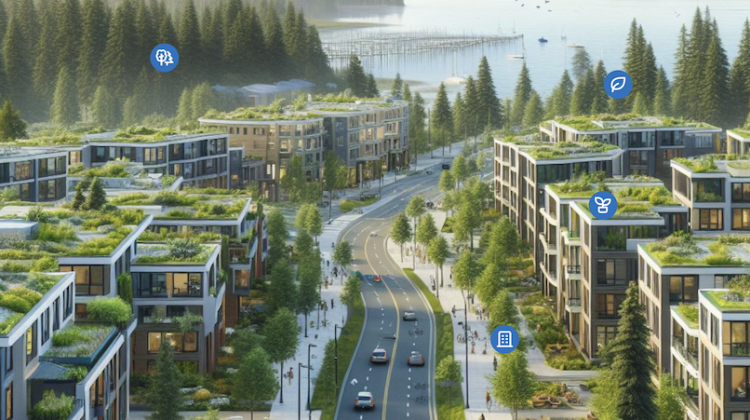Leveraging Nature Based Solutions to Achieve Carbon-Neutral Cities

Institutions and organizations are increasingly aligned in their pursuit of solutions to anthropogenic climate change. The Climate Project at MIT, announced in 2024, marshals the interdisciplinary skill, expertise, and resources of the Institute to solve what President Kornbluth called “the greatest and most urgent scientific and societal challenge of our age.” When envisioning solutions and interventions, one often pictures more radical proposals such as speculation about solar sun shades or walls built to protect polar ice sheets. In addition to exploring these bold visions, smaller interventions focused on leveraging the benefits of human-scale nature also offer a pathway towards building healthy and resilient communities of the future.
In an ongoing project, an interdisciplinary research team argues nature-based solutions pairs ecosystem services and green infrastructure to offer cost effective avenues to nudge pro-environmental behaviors, support human wellbeing, and sequester anthropogenic carbon emissions. For example, many transportation planners are invested in providing attractive alternatives to single occupancy vehicles as a mobility modality. DUSP’s Cong Cong posits that investing in trees and protected greenspace along mobility corridors will provide a behavioral nudge, where users will prioritize riding a bike on a shaded and protected bike path rather than using their car on congested traditional road infrastructure. The benefits of this example include improved exercise and health, increased greenspace, reduced carbon emissions and the ability to sequester some local carbon emissions. But with fuzzy metrics for a cost benefit analysis, how can planners, designers, and policy-makers craft compelling arguments for nature-based solutions?
The Nature-Based Solutions Dashboard, an interactive website, offers a portal to understand how we can work with nature to find solutions to the challenges of the anthropocene. “Nature-based solutions offer a sustainable and cost-effective way to mitigate urban greenhouse gas emissions while also providing other benefits like improving air quality, enhancing biodiversity, and creating more livable cities for people,” says Cong, a lecturer of Urban Science at DUSP. “The dashboard builds upon research for a paper in Nature Climate Change to offer an easy to navigate system, designed to help us imagine and realize greener and healthier cities.”
The dashboard was developed by Cong and Diego Temkin, a sophomore pursuing a dual degree in Computer Science and Engineering and Urban Planning at MIT. “By blending my knowledge in urban science that I’ve gained through this project and my DUSP coursework, alongside skills in practical programming that are now more essential than ever, I’ve gained a better understanding of the impacts this research can have on the future of climate change and communities across the globe,” reflected Temkin.
Visit the Nature-Based Solutions Dashboard
Read "Contribution of prioritized urban nature-based solutions allocation to carbon neutrality"


